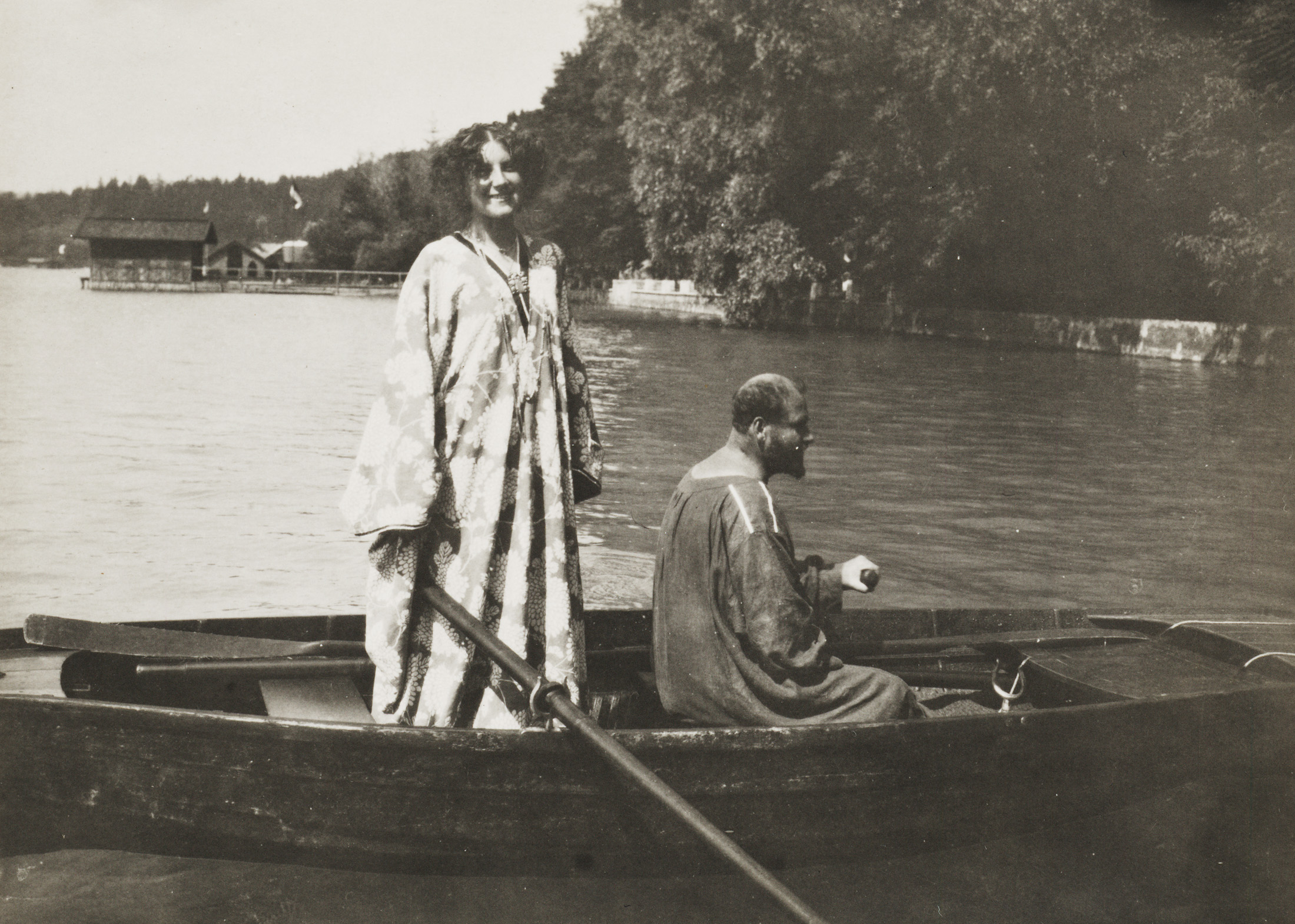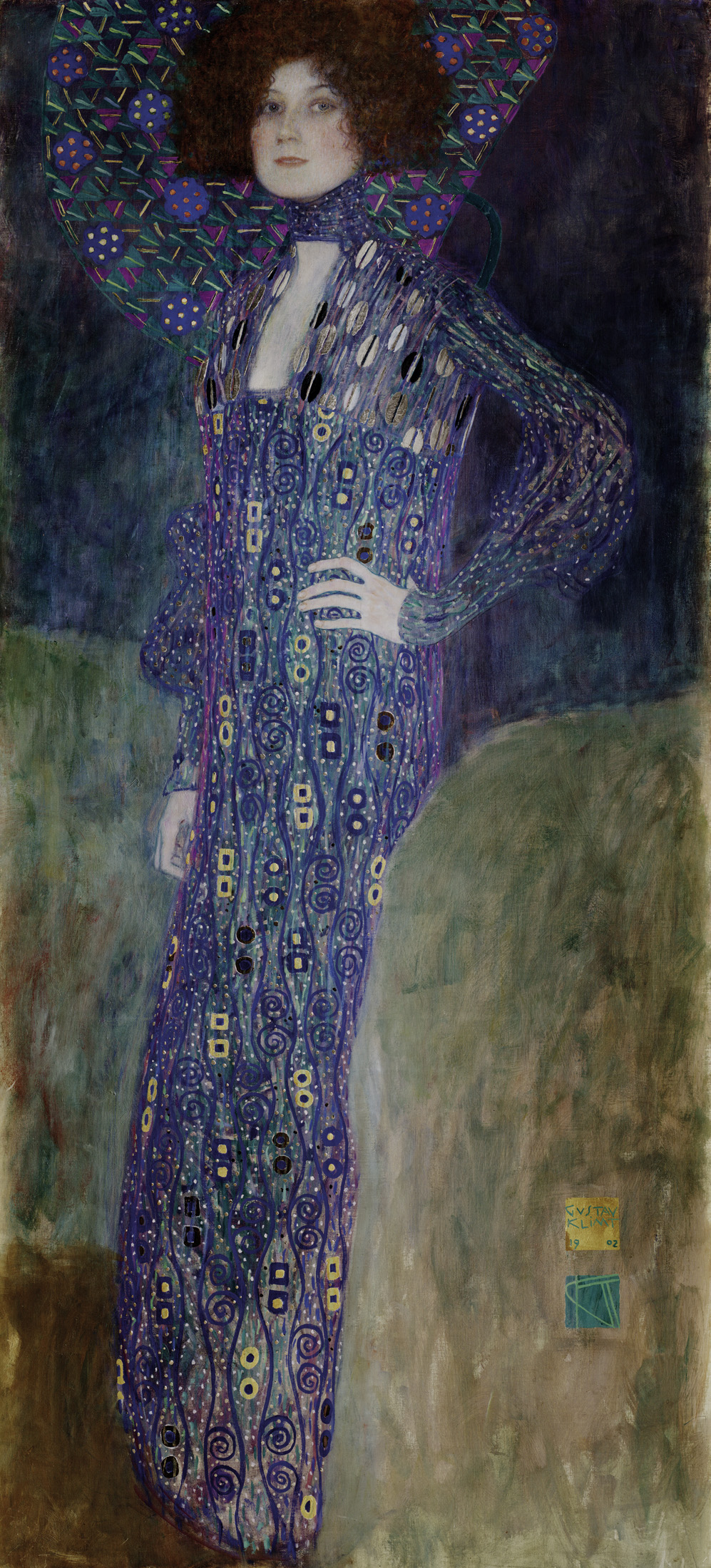Klimt and Emilie Flöge

Gustav Klimt painted the portrait of Emilie Flöge, who he first met in the 1890s and stayed connected with for the rest of his life, between 1902 and 1904. The painting was bought by the Historical Museum of the City of Vienna (today: Wien Museum) as early as 1908, since neither Gustav Klimt nor the sitter were satisfied with the portrait. Today, it is regarded as the first Klimt portrait that features an ornamental background.
Unusually for the time, the three sisters Pauline (1866-1912), Helene (1871-1936), and Emilie Flöge (1874-1952) ran a fashion salon under the name “Schwestern Flöge” in the “Casa piccola” house in the 6th district of Vienna, Mariahilferstraße 1c. They were the daughters of Hermann Flöge (1837-1897), who made his fortune and gained acceptance into the bourgeois circles as a manufacturer of meerschaum pipes. The salon, which was designed by the Vienna Workshop, thrived and within a short period became a meeting place of good society.
Klimt probably met Emilie through his brother Ernst, who married Emilie’s sister Helene in 1891. Due to the early death of his brother in 1892, Klimt became the custodian of their daughter Helene Luise (1892-1980). This “relationship by marriage” meant that the Klimts and the Flöges engaged in a variety of activities—visits to the theatre, exhibitions, and the opera, as well as joint vacations—on a regular basis. Above all, their annual summer retreats between 1900 and 1916 at Lake Attersee brought Emilie, the successful and attractive businesswoman, and Gustav, the artist 22 years her senior, closer together.
To this day, it is not clear whether the two were ever lovers, or whether their friendship was of an intense platonic nature. Gustav Klimt’s writings to Emilie Flöge mostly mention “everyday things”; occasionally, there are personal notes, but only rarely anything of an intimate nature. Nonetheless, Klimt often wrote up to eight cards on a single day to his lifelong friend. In many photographs taken mostly by Klimt, Emilie can be seen at Lake Attersee posing in reform clothing she designed herself and wearing hats and jewellery of the Vienna Workshop.
In 1907, she modelled for “The Kiss,” arguably Klimt’s most famous painting. Gustav Klimt also immortalized himself in it, and gave the painting the addition title “Lovers.” Klimt’s concept of idealized, “eternal” love shows not the erotic side of ecstasy, but the tender embrace of a couple. Completely clothed in ornamental robes and their silhouette contrasting with the monotonous background, the couple is standing on a flower-filled lawn. The painting was exhibited for the first time in 1908 at the Kunstschau exhibition in Vienna, where it was acquired by the State of Austria. Today, the portrait of Emilie and Gustav is the icon of the Österreichische Galerie Belvedere.





